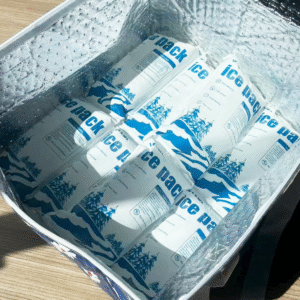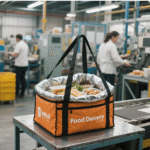Fabricante de gelo seco de pacote de gelo: Como você escolhe em 2025?
Se você está comparando opções para controle de temperatura, o fabricante de gelo seco de pacote de gelo decision comes first. Use pacotes de gel ou pcm por 2-8 ° C, e use uma fabricante de gelo seco quando as cargas devem chegar congeladas com -18 ° C ou abaixo de -18 ° C. Em 2025, rotulagem clara (E 1845) e o custo de corte certo ao melhorar ao melhorar no tempo, Entregas In -Espec. Use uma regra de dimensionamento simples para o líquido de arrefecimento de tamanho certo e valide com um madeireiro.
-
Pick the right coolant by lane with an fabricante de gelo seco de pacote de gelo decision tree.
-
Size coolant with a simple worksheet so your fabricante de gelo seco de pacote de gelo plan avoids overpack.
-
Operate an fabricante de gelo seco de pacote de gelo safely and comply with 2025 Regras de portador aéreo.
-
Decida quando a produção de gelo seco no local supera a compra por libra.
Qual método de resfriamento se encaixa na sua pista com uma fabricante de gelo seco de pacote de gelo?
Choose gel/PCM for 2–8 °C and an ice pack dry ice maker for frozen lanes. Dry ice sits at −78.5 °C, so it protects frozen payloads longer than water‑based packs. For regulated air, keep packages vented, mark UN 1845, and plan realistic loss (about 5–10 lb per 24 hours in a typical cooler).
From a user standpoint, you want chilled items to stay cool without freezing and frozen items to stay rock‑solid. Phase‑change packs hold tight setpoints like +5 °C for day‑long routes, while dry ice provides a deep thermal buffer for 48–72 hours. Um fabricante de gelo seco de pacote de gelo gives you fresh pellets on demand, avoiding supplier delays and sublimation loss during storage. Common use cases include vaccines at 2–8 °C with PCM, and ice cream or biologics with dry ice for multi‑day transit.
Sizing rules for ice pack dry ice maker shipments
Start with 1–1.5 lb of dry ice per 24 hours for small EPS shippers and adjust via lane tests. Remember that ~1 lb of dry ice releases ~250 L of CO₂ gas; never seal containers. For gel/PCM, precondition to the right setpoint and pack snugly to minimize air gaps. Um fabricante de gelo seco de pacote de gelo helps you create only what you need, which reduces waste and keeps density high for longer hold time.
| Opção de resfriamento | Intervalo de destino | Duração típica | O que isso significa para você |
|---|---|---|---|
| Gel/PCM packs | 2–8 °C or other setpoints | ~12–36 h | Best for chilled goods that must not freeze |
| Gelo seco (from an ice pack dry ice maker) | ≤ −18 °C (congelado) | ~48–72 h | Best for multi‑day frozen shipments |
| Cargas mistas | Zoned (PCM + gelo seco) | Varia | Separate frozen and chilled zones to protect both |
Dicas e sugestões práticas
-
Short local deliveries: Use pre‑frozen gel/PCM packs in a tight shipper; Adicione um registrador de temperatura.
-
Multi‑day frozen: Place dry ice above payload with spacers; vent the shipper and label UN 1845 com peso líquido.
-
Mixed baskets: Use a barrier between dry ice and chill‑only items to avoid flash‑freeze damage.
Caso do mundo real: A Midwest distributor shipped steaks 60 hours in July with 15 lb of dry ice in a 2‑inch EPS cooler; arrival temperature was −23 °C and no thaw occurred. The result shows why dry ice excels on hot, long lanes.
How does an ice pack dry ice maker work and how do you use it safely?
An ice pack dry ice maker flashes liquid CO₂ into snow and compresses it into pellets or blocks. Use luvas isoladas e proteção ocular, work in ventilated rooms, and transfer product to vented coolers immediately after production.
Small “snow horn” devices attach to siphon‑tube CO₂ cylinders for a few pounds per day, while mid‑volume pelletizers output ~120–150 kg/h for regional hubs. High‑volume systems exceed 750 kg/h and often pair with CO₂ recovery. For safe use: confirm fittings (por exemplo, CGA‑320), verify cylinders have siphon tubes, and post CO₂ alarm points where production is routine. Um fabricante de gelo seco de pacote de gelo reduces stockouts because you form pellets right before packing.
Exposição co₂, ventilação, and handling benchmarks
Plan ventilation so workplace CO₂ stays below time‑weighted limits, keep Class 9 labels visible, and never use airtight boxes. Store dry ice in insulated but vented containers; expect 5–10 lb/day sublimation from a typical cooler. Train staff on tongs and insulated gloves to prevent frostbite.
Passo a passo: operate an ice pack dry ice maker safely
-
Work in a ventilated area; put on insulated gloves and eye protection.
-
Attach the device to a siphon‑tube CO₂ cylinder using the correct fitting.
-
Trigger the cycle to form snow; compress into pellets or a small block.
-
Transfer dry ice to a ventilado refrigerador isolado; never seal the lid airtight.
-
Pack above the frozen payload; label the box with UN 1845 and net weight.
-
Let remaining dry ice sublimate in a ventilated space after use.
Self‑check: do you need an ice pack dry ice maker?
-
My product must arrive congelado (≤ −18 °C) por mais de 24 horas.
-
My route is ar and I can apply UN 1845 labels and vented packaging.
-
I need 2–8 ° C. without freezing any contents.
-
I ship weekly volumes that justify on‑site production.
When should you invest in an ice pack dry ice maker?
Invest when weekly dry ice use is consistently high or supply is unreliable. At hundreds of pounds per week, in‑house production often beats retail prices and eliminates delivery loss.
On‑site production cuts per‑pound costs, removes lead‑time risk, and lets you choose pellet or block formats. It also improves quality because freshly made dry ice is denser. Indicators include frequent frozen shipments, carrier delays, or the need for precise automated dosing.
How to ship with an ice pack dry ice maker legally in 2025?
Follow IATA PI 954, mark UN 1845, and keep packages vented. Many air lanes don’t require a full Shipper’s Declaration when dry ice is the only dangerous good, but labels and text size must be correct.
For domestic air mail in the U.S., the cap is typically 5 lb of dry ice per parcel. Carriers updated acceptance job aids in January 2025 specifying minimum text heights for UN 1845 on packages. Create a short checklist for staff and verify before drop‑off.
2025 trends for the ice pack dry ice maker user
Em 2025, on‑site dry ice production continues rising, CO₂ recovery boosts pelletizer efficiency, and reusable PCM systems expand in chilled lanes. Market demand grows across food and healthcare, while carriers emphasize clearer labels and venting. These trends help you align cost, conformidade, e sustentabilidade.
Últimos desenvolvimentos de vista
-
CO₂ circularity: Recovery units capture vented gas and can lift net output significantly.
-
PCM momentum: Reusable 2–8 °C systems reduce hazmat steps and packaging waste.
-
Monitoring by default: Registradores de baixo custo fazem rotina de validação de pista, trimming coolant overages.
Cold chain logistics keeps expanding through 2025, with dry ice and PCM both gaining share. The takeaway: pick by temperature target first, then optimize cost and compliance. These trends help you align cost, conformidade, and sustainability with your fabricante de gelo seco de pacote de gelo plano.
Perguntas frequentes
Is an ice pack dry ice maker safe to use at home or at work?
Use it only in ventilated areas with insulated gloves and eye protection; dry ice is −78.5 °C and CO₂ can displace oxygen.
Eu preciso de uma declaração de remetente para gelo seco?
Often not when dry ice is the only dangerous good with non‑dangerous contents. Still apply UN 1845 labels and vent packages.
How much dry ice do I need?
Comece com 1–1,5 lb por 24 hours for small parcels, then adjust by testing and add a buffer for hot routes.
Are gel/PCM packs hazardous?
Não. They are generally non‑hazmat and reusable when conditioned to the correct setpoint.
Can I mix frozen and chilled items?
Sim, but isolate zones: dry ice for frozen, PCM for chill, with a barrier to prevent over‑freezing.
Internal links for the ice pack dry ice maker topic
Summary and recommendations for your ice pack dry ice maker
Choose coolant by temperature: gel/PCM for 2–8 °C and an fabricante de gelo seco de pacote de gelo for frozen shipments. Right‑size your charge, vent and label properly, and test lanes with loggers. On‑site production pays off at higher volumes or when supply is inconsistent. Um fabricante de gelo seco de pacote de gelo also reduces waste by producing only what you need.
-
Classify each lane (frozen vs chilled). 2) Use the sizing rule and validate with a logger. 3) Build a short SOP and a 2025 labeling checklist. 4) If frozen volume is high, evaluate an fabricante de gelo seco de pacote de gelo. 5) Document your fabricante de gelo seco de pacote de gelo settings and train staff. Contact Tempk for a lane review and packaging design.
About Tempk and our ice pack dry ice maker expertise
Tempk designs practical cold chain systems, including the right ice pack dry ice maker strategy, for food, farmacêutico, and labs. We test gel/PCM vs dry ice, specify makers when justified, and validate packaging in our CNAS‑aligned lab. Our advantages: data‑backed recommendations and reliable supply options.
CTA: Talk to an expert about your ice pack dry ice maker: request a 30‑minute lane review today.
























